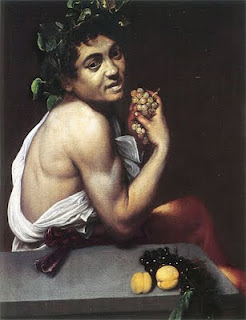Art. Books. Art books. Book art. I have lived most of my adult life near the intersection of these two worlds, as an artist, diarist, voracious reader, art-gallery/art-book-store director and blogger about art and books. You could say it is my happy place -- and for the last two weeks my proverbial cup runneth over!
Artists, always sensitive to cultural changes on what seems to be a cellular level, have turned to books as medium, just as books are losing their dominance as conveyors of information, while maintaining or perhaps even gaining importance as aesthetic objects.
Book Art: Iconic Sculptures and Installations Made from Books, published by Gestalten in 2011, features the work of 46 artists who use books as a medium -- cutting, slicing, carving, gouging, stacking, suspending, rolling and otherwise manipulating these mass-produced works into one-of-a-kind precious objects. (
Click here to buy
Book Art from Amazon.com.)
In her introduction to Book Art Christine Antaya states:
 |
By Gene Epstein from Book Art,
Copyright Gestalten 2012 |
"Artists who have opened their eyes to the interplay of structure and format within the book, a feature largely taken for granted until texts became available through different media, have been exploring this using the scalpel and the knife. Sentences are cut and peeled out to create new contexts and more fluid meanings for narratives; words are erased; the shapes of books are returned to the organic matter from which the paper they are printed on first came."

Another happy foray down the art/book rabbit hole is an exhibition I attended last week,
Pages, on view through January 13, 2013 at the Alyce de Roulet Williamson Gallery at Art Center College of Design here in Pasadena.
Pages displays the work of contemporary artists who use books and pages as mediums, alongside manuscripts, documents, doodles and other forms of written or printed pages from the 15th century to the 21st.
New York artist Robert Kushner’s
Scriptorium: Devout Exercises of the Heart consists of hundreds of drawings and paintings of foliage and flowers on antique book pages and covers, and is hung salon style with pins on a wall that spans the entire depth of the gallery space. Opposite the wall is a row of six vitrines displaying pages from 15th and 16th century
Herbals, the neat calligraphy and herbal illustrations quietly foreshadowing Kushner's impressive installation.
Three stunning wall pieces by Echiko Ohira made from cardboard, tea-stained paper, glue, and tea-stained sketchbooks provide sophisticated visual counterpoint to objects such as a placemat from a restaurant in Altadena covered with handwritten scientific formulae by Nobel prize winning physicist Richard Fineman, and large wall-hung copies of pages from a first edition of Mark Twain's
Celebrated Jumping Frog of Calaveras County with Twain's handwritten edits and marginalia.

All of which brings us to my third and final harmonious convergence in the art/book matrix. In my last post I wrote about Nobel prize winning author Orhan Pamuk's recently released book,
The Innocence of Objects, a catalog of his museum that opened last spring in Istanbul -- a museum that Pamuk conceived in tandem with his novel,
The Museum of Innocence. I told myself I didn't have time to read a 500+ page novel, then immediately downloaded and devoured it. It is a mesmerizing tale of lost love and obsession. Having the museum catalog to refer to is icing on this masterful cake. (
Click here to buy
The Museum of Innocence from Amazon.com.
Click here to download for Kindle.)
Upcoming at Offramp Gallery
Be among the first to select works at benefit prices by Los Angeles luminaries such as Laddie John Dill, Ed Moses, Kristin Calabrese, Larry Bell, Chuck Arnoldi, Iva Gueorguieva, Anita Bunn, Susan Sironi, Jim Ganser and many more.
Patssi Valdez: Mementos
November 18 - December 23, 2012
Opening Reception: Sunday, November 18, 2-5pm
Closing Reception & Holiday Party: Sunday, December 23, 2-5pm
Elaine Carhartt: Portraits
November 18 - December 23, 2012
Opening Reception: Sunday, November 18, 2-5pm
Closing Reception & Holiday Party: Sunday, December 23, 2-5pm
James Griffith: Natural Selection
November 18 - December 23, 2012
Opening Reception: Sunday, November 18, 2-5pm
Closing Reception & Holiday Party: Sunday, December 23, 2-5pm
 Natural Fashion by Hans Silvester
Natural Fashion by Hans Silvester  Paris: Portrait of a City
Paris: Portrait of a City  Joseph Cornell's Manual of Marvels
Joseph Cornell's Manual of Marvels The $12 Million Stuffed Shark: The Curious Economics of Contemporary Art by Don Thompson
The $12 Million Stuffed Shark: The Curious Economics of Contemporary Art by Don Thompson The Innocence of Obects by Orhan Pamuk
The Innocence of Obects by Orhan Pamuk Hiroshige: One Hundred Famous Views of Edo
Hiroshige: One Hundred Famous Views of Edo























